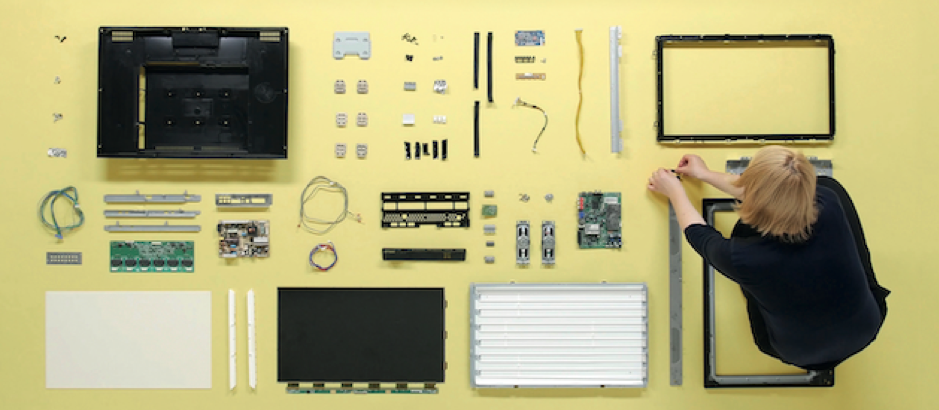The transition to a circular economy is underway across industries, sectors and communities, however the pace of policy reform, design outcomes and practical action in Australia varies considerably.
A key question is whether the initiatives – existing or proposed – can deliver against the fundamental principles of what constitutes a circular economy, or are they yesterday’s recycling projects rebranded to appear more ‘circular’.
Muscled-up resourced recovery programs in isolation of focused activity at the top of the waste hierarchy will be impotent in the absence of much more attention to how products are conceived, designed and consumed.
While better product design is cited in circular economy policy-speak, it is treated superficially with the aim of including the ‘right’ language. There is little evidence in Australia and New Zealand, that the required investment, incentives, training, policies and regulations are being used to activate circular design and therefore greater attention to waste avoidance.
In many ways design is the key to shaping a sustainable future and eliminating problems from the outset. Creating long-life products and high utility services that are regenerative, restorative and waste free are a major part of the solution. Designing-out toxics and pollution is the positive disruption needed to make a difference.
If design initiatives embody and demonstrate the ability to lock-out waste, toxics and pollution, maximise the longevity of products, keep materials in use and regenerate natural systems, then we’re on the right track. Similarly, if government policies and programs can go beyond conventional resource recovery and market development projects with a view to design-oriented investment and incentives, then positive change is likely, albeit with challenges along the way.
The menace of premature obsolescence
Premature obsolescence of manufactured durables, including electrical and electronic products, is an obvious contributor to waste generation and the loss of otherwise reusable components and recyclable materials. Indeed some critics argue that recycling has evolved into a convenient excuse for brands and manufacturers to build-in premature obsolescence and render products disposable well ahead of what most consumers expect, and this especially relates to electronics – the fastest growing waste stream in the world.
Any conceptual illustration of the circular economy places design for product durability, reuse, repair and the sharing economy as essential activities. It underscores the role of design as critical enabler of circular outcomes and alternative business models aimed at new patterns of consumption. It’s not just a simplistic argument about consuming less; it’s about how we act intelligently to decouple resource consumption (and its impacts) from economic growth.
The Victorian Design Challenge focused on Ewaste
With increased attention on the role of design we can truly think system-wide to activate circular action, and the 2020 Victorian Design Challenge is highlighting the capacity and capability of our designers, design students, engineers and innovators to engage with ewaste and its elimination. It’s about big ideas to deal with big impacts and accelerate electronics sustainability by design.
For more information look here: 2020 Ewaste Challenge
As part of Melbourne Design Week, the National Gallery of Victoria will host the third annual Victorian Design Challenge. School students (primary and secondary), professional designers, engineers, entrepreneurs and innovators are invited to apply design thinking and processes in targeting real-world problems.
Creative Victoria and the NGV are offering a $20,000 major prize for the best design idea addressing one of Australia’s fastest growing waste problems – ewaste.
The E-Waste Challenge aims to highlight the capacity and responsibility of designers to contribute to shifting behaviour, raising awareness, redesigning products, or devising smart end-of-life solutions that reduce the negative impacts of e-waste.
The Challenge has been developed in association with the Ewaste Watch Institute – a not-for-profit organisation focused on accelerating electronics sustainability, circular design and environmental stewardship. We are very excited to be assisting with this major initiative.
The Ewaste Challenge is a great opportunity to demonstrate specific solutions that maximise the value and durability of products, close the loop on materials, or maybe redesign systems and services to introduce new business models that enable sharing, leasing and dematerialisation.
The products we enjoy, consume and discard reflect our culture and values, so the time has come to elevate the importance of design to effectively address waste-related impacts and issues.
As a discipline that brings a creative dimension to utility and function, there is no doubt that design can shape a future that is socially responsible, ecologically essential, economically sensible and, of course, culturally desirable.
Register for the Challenge ASAP noting the deadline for entries is 1 November 2020.
Acknowledgements
- Presented by the National Gallery of Victoria in partnership with Creative Victoria.
- Melbourne Design Week and the Victorian Design Program are initiatives of the Victorian Government.
- Supported by the Ewaste Watch Institute, the Design Institute of Australia and EY.
- The Victorian Design Challenge Competition process is developed and delivered by CityLab

